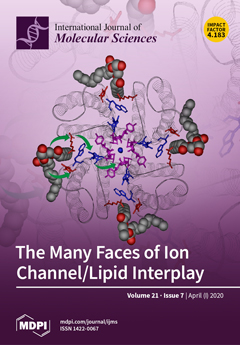Interferon (IFN) regulatory factor 1 (IRF1), a transcription factor with a novel helix–turn–helix DNA-binding domain, plays a crucial role in innate immunity by regulating the type I IFN signaling pathway. However, the regulatory mechanism through which IRF1 regulates type I IFN in fish is not yet elucidated. In the present study, IRF1 was characterized from golden pompano,
Trachinotus ovatus (designated ToIRF1), and its immune function was identified to elucidate the transcriptional regulatory mechanism of
ToIFNa3. The full-length complementary DNA (cDNA) of
IRF1 is 1763 bp, including a 900-bp open reading frame (ORF) encoding a 299-amino-acid polypeptide. The putative protein sequence has 42.7–71.7% identity to fish IRF1 and possesses a representative conserved domain (a DNA-binding domain (DBD) at the N-terminus). The genomic DNA sequence of
ToIRF1 consists of eight exons and seven introns. Moreover,
ToIRF1 is constitutively expressed in all examined tissues, with higher levels being observed in immune-relevant tissues (whole blood, gill, and skin). Additionally,
Cryptocaryon irritans challenge in vivo increases ToIRF1 expression in the skin as determined by Western blotting (WB); however, protein levels of ToIRF1 in the gill did not change significantly. The subcellular localization indicates that
ToIRF1 is localized in the nucleus and cytoplasm with or without polyinosinic/polycytidylic acid (poly (I:C)) induction. Furthermore, overexpression of ToIRF1 or ToIFNa3 shows that
ToIRF1 can notably activate
ToIFNa3 and interferon signaling molecule expression. Promoter sequence analysis finds that several interferon stimulating response element (ISRE) binding sites are present in the promoter of
ToIFNa3. Additionally, truncation, point mutation, and electrophoretic mobile shift (EMSA) assays confirmed that
ToIRF1 M5 ISRE binding sites are functionally important for
ToIFNa3 transcription. These results may help to illuminate the roles of teleost
IRF1 in the transcriptional mechanisms of type I IFN in the immune process.
Full article






